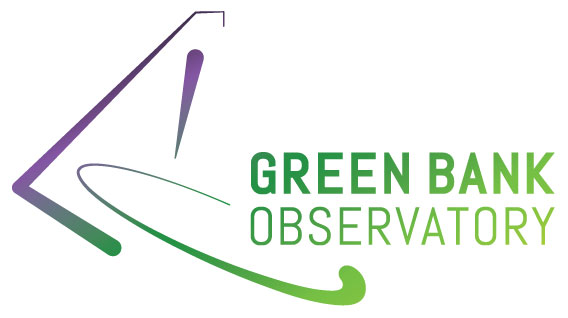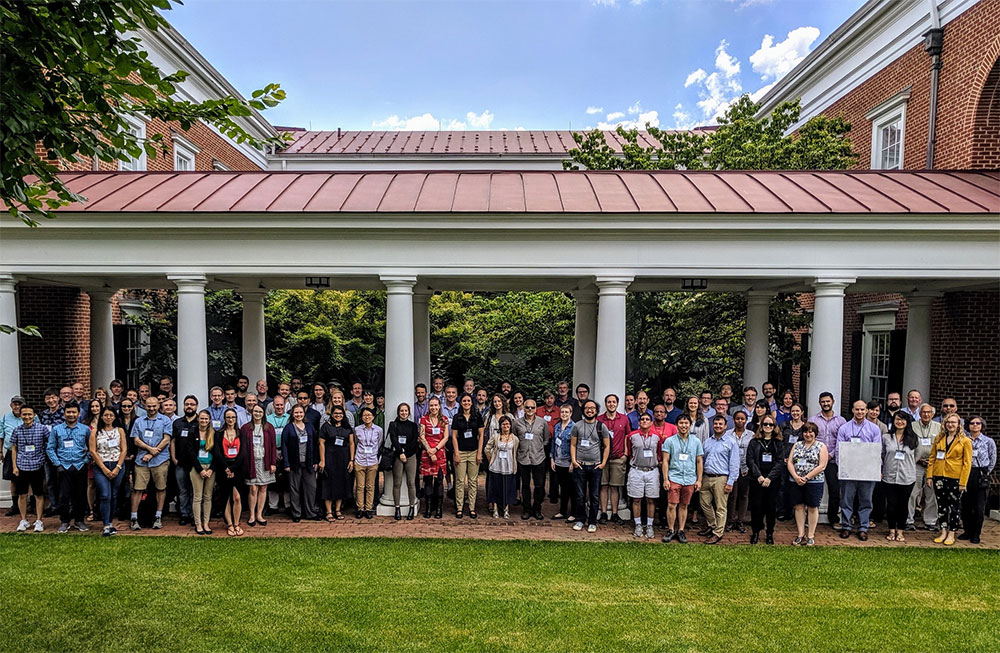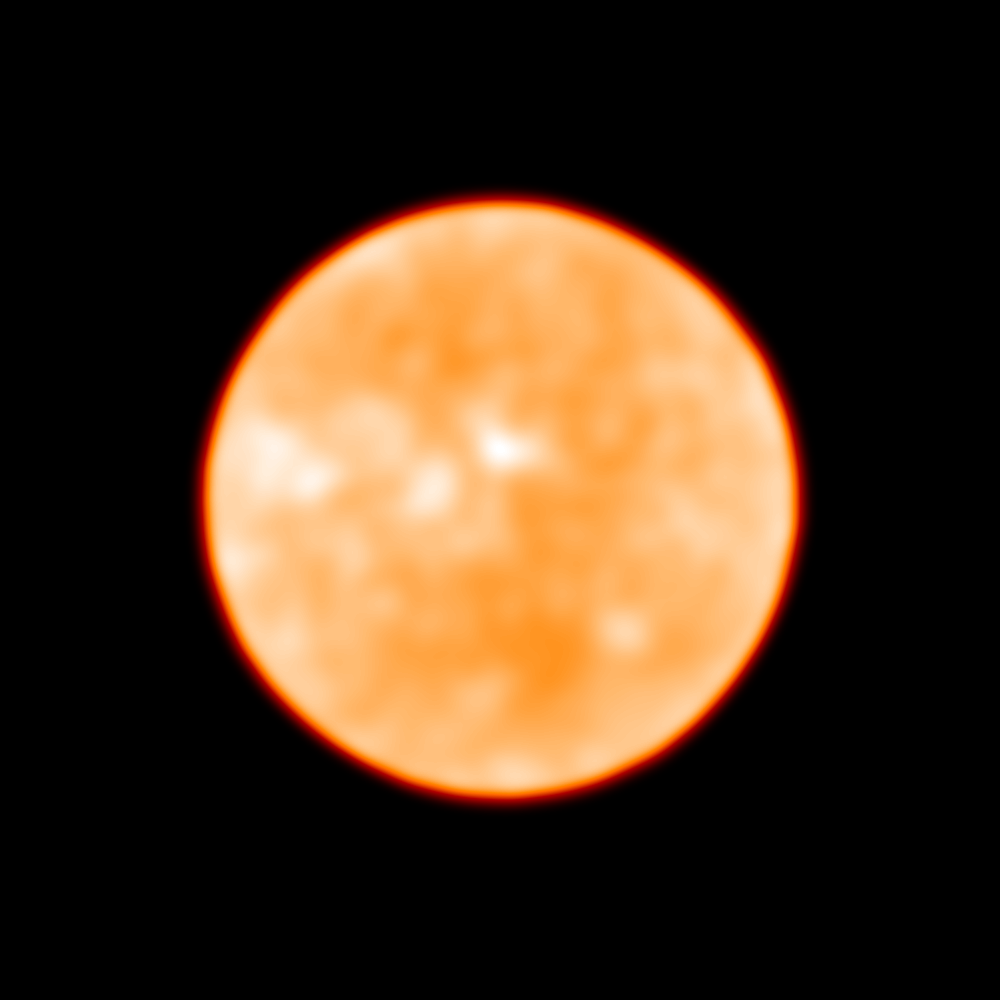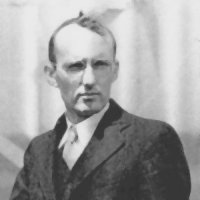NRAO eNews
Volume Vol#, Issue Iss#
Day# Month# Year#
Upcoming Events

7th VLA Data Reduction Workshop
Oct 7 - 18, 2019 | Socorro, NM

ALMA2019: Science Results and Cross-Facility Synergies
Oct 14 - 18, 2019 | Cagliari, Sardinia, Italy
NRAO Call for Proposals: Semester 2020A

The National Radio Astronomy Observatory (NRAO) invites scientists to participate in the Semester 2020A Call for Proposals for the Karl G. Jansky Very Large Array (VLA) and the Very Long Baseline Array (VLBA), High Sensitivity Array (HSA), and Global 3mm VLBI Array (GMVA).
The submission deadline for Semester 2020A proposals is Thursday, 1 August 2019, at 17:00 EDT (21:00 UTC).
The NRAO especially wishes to highlight a new opportunity to submit Extra-Large proposals. See the Extra-Large proposal page for details.
Proposal preparation and submission are handled via the NRAO Proposal Submission Tool (PST) available at NRAO Interactive Services. Proposers who need assistance with proposal preparation or have questions regarding the Call for Proposals or NRAO telescope capabilities should contact Observatory staff via the NRAO Helpdesk. Note that using these tools (both the PST and the Helpdesk) requires registration.
GBO Call for Proposals: Semester 2020A

The Green Bank Observatory (GBO) invites scientists to participate in the 2020A Semester Call for Proposals for the Green Bank Telescope (GBT). The submission deadline for Semester 2020A proposals is Thursday, 1 August 2019, at 17:00 EDT (21:00 UTC).
We have noticed for the GBT, that although proposals with female PIs have the same success rate as proposals with male PIs, over the past semesters female PIs tend to request half the amount of time that male PIs request. We are monitoring the situation and welcome suggestions.
The GBO encourages proposals that take advantage of the GBT’s unique capabilities across 0.29 to 116.2 GHz frequency range. (Coverage is not available for 2.65-4.0 GHz, 15.8-18.0 GHz, and 49.9-67.0 GHz)
Key science areas include, but are not limited to:
- Low column density HI (NHI ≈1017 cm-2 galactic and extragalactic)
- astrochemistry
- cosmology
- fast radio bursts
- galaxy and cluster evolution
- pulsars (searches and timing)
- radio recombination lines
- solar system science
The GBO also encourages the submission of high risk, high reward proposals requiring GBT observing time.
Proposals requesting the GBT as part of High Sensitivity Array (HSA), and Global 3mm VLBI Array (GMVA) should be submitted through the Very Long Baseline Array’s call.
We wish to remind proposers of continuing opportunities for joint observations with the Chandra X-ray Observatory, the Hubble Space Telescope, the Swift Gamma-Ray Burst Mission, the Fermi Gamma-ray Space Telescope and XMM-Newton.
Proposal preparation and submission remain via the NRAO Proposal Submission Tool (PST) available at NRAO Interactive Services. Note that use of the PST requires registration. Proposers who need assistance with proposal preparation or have questions regarding the Call or GBT capabilities should contact Observatory staff via the Helpdesk.
The Scientific Quest for High Angular Resolution
Special Session: AAS Meeting, January 2020
The NRAO will convene a Special Session at the January 2020 American Astronomical Society (AAS) meeting titled The Scientific Quest for High Angular Resolution (exact date/time TBD).
Sensitive ground- and space-based astronomical observations acquired at high angular resolution are enabling new insights across many frontier fields of astrophysics, such as star and planet formation. At the dawn of multi-messenger astrophysics, radio-wavelength follow-up at high angular resolution of gravitational wave sources is providing critical insights into the energetics and evolution of these events. Improvements in observations at high angular resolution are also enabling deep proper-motion measurements and surveys, vastly increasing the cosmic volume across which scientists can meaningfully observe protoplanetary disk formation, black hole feeding, jet launching, Local Group dynamics, and much more. These observational insights are propagating into a much improved theoretical understanding of the physics driving each of these frontier fields.
This Special Session will highlight recent scientific breakthroughs enabled by imaging at high angular resolution; describe planned near- and long-term resolution improvements for ground- and space-based facilities; discuss major scientific leaps likely to result from even higher angular resolution across the electromagnetic spectrum; and review the importance of high angular resolution to the high-priority science themes of the great observatories to be commissioned in the next decade. This Special Session will feature a session of invited oral presentations and an associated poster session with contributed presentations.
The confirmed speakers include Keiichi Asada (Academia Sinica Institute of Astronomy and Astrophysics, Taiwan), Tony Beasley (NRAO, USA), Sarah Dodson-Robinson (University of Delaware, USA), Jane Huang (Harvard University, USA), James Miller-Jones (Curtin University, Australia), Gisela Ortiz-Leon (Max Planck Institut fur Radioastronomie, Germany), and Fred Davies (University of California Santa Barbara, USA).
We encourage you to consider contributing to the associated poster session. When submitting a contributed poster abstract to the AAS, you will have the option of requesting that your presentation be included in this Special Session.
We look forward to seeing you at the January 2020 AAS!
Radio / Millimeter Astrophysical Frontiers in the Next Decade: 25-27 June 2019

Attendees at Radio / Millimeter Astrophysical Frontiers in the Next Decade.
[click to enlarge]
More than 120 participants gathered in Charlottesville, Virginia in late June to discuss the astrophysical frontiers identified in the Science White Papers submitted to the Astro2020 Decadal Survey. The discussion at this conference highlighted the science frontiers that demand observations at centimeter and/or millimeter wavelengths with current and forthcoming facilities, notably a next-generation Very Large Array (ngVLA). Such observations were cast in the broader context of multi-wavelength and multi-messenger astronomy.
The science program featured invited reviews of the five key ngVLA science goals and the eight thematic areas of the Astro2020 Science White Papers. These were rounded out with 18 contributed talks, 35 posters, and briefings on the status of the ngVLA project. Early-career researchers were prominent among the presenters. As they are received, the conference talks and posters will be made available on the workshop website.
ALMA Program News

Timelapse of the 2 July 2019 solar eclipse as seen from an ALMA antenna.
The Solar Eclipse of 2 July 2019 was visible from the Joint ALMA Observatory with a maximum of 76% of the Sun covered by the Moon. One of the antennas observed the Sun during the eclipse, and its 27 images were used to create a short video.
“We had to undertake an observatory-wide effort to observe the eclipse with an antenna,” explains Antonio Hales, ALMA astronomer in charge of observations. “Snow, high winds, and cloudy skies were some of the challenges faced by the ALMA team when taking this unique picture of the Moon as it partially hid the Sun, but in the end, we are glad that we succeeded.”
Cycle 6 Science Observing
The ALMA antennas have been observing on their most extensive C43-10 configuration (16.2 km maximum baseline; approximate diameter of Washington D.C. beltway). The array will gradually move to shorter baselines over the next few months. It is now moving to C43-8, with baselines 110 – 8500m providing a 100 GHz beam of 0.096 arcseconds. Atacama Compact Array (ACA) observations continue.
Cycle 7 Call for Proposals and Supplemental Call
Reviewers met in Atlanta 16-21 June; results are expected at the end of July. In Cycle 7, ALMA will offer an ACA stand-alone Supplemental Call for Proposals. It is anticipated that the Supplemental Call will be released on 3 September 2019 with a proposal deadline of 1 October 2019. Since the Supplemental Call will follow the Main Call by five months, the Supplemental Call will maximize the scientific output of the ACA by allowing more timely science to be proposed. Proposals accepted in the Supplemental Call will be scheduled for observations between January and September 2020. Note that Proposals accepted in the Cycle 7 Supplemental Call will receive priority Grade C and will have lower priority than ACA proposals accepted in the Cycle 7 Main Call.
Proposals submitted in the Supplemental Call will be peer reviewed using a distributed system in which each proposal team selects a designated reviewer to participate in the review process. The designated reviewer may be the Principal Investigator of the proposal or one of the co-Investigators.
Each designated reviewer will be responsible for reviewing ten proposals submitted in the Supplemental Call. Each submitted proposal will be ranked by ten reviewers, and the final ordered list of proposals will be determined by an average of the ten reviewers’ rankings. If a designated reviewer does not submit their reviews and ranks by the review deadline, the proposal for which they were identified as the reviewer will be rejected. For details please see the ALMA Science Portal.
Fourth ALMA Science Conference
The ALMA partnership is organizing the Fourth ALMA Science Conference in Cagliari (Sardinia, Italy) on 14 – 18 October 2019. The full breadth of ALMA science will be discussed, with special emphasis on results from the first rounds of ALMA Large Programs, ALMA's high resolution and high frequency capabilities, the new Solar and VLBI modes, as well as the synergy between ALMA and other observatories. As in previous conferences of this series, we expect to discuss the scientific priorities for the implementation of the ALMA Development Roadmap.
Abstract submission for the conference closed 15 May 2019. Owing to the large response, the capacity of the venue was met (and expanded to its limits). Notices have gone out to those whose abstracts were selected for talks and posters, who should register as soon as possible, as there is a long waiting list. See the conference website for details.
VLBA Saint Croix Antenna to Resume Observing

VLBA antenna at St. Croix.
[click to enlarge]
The Saint Croix VLBA antenna went offline on 22 April 2019 for major metalwork and painting in the wake of two major hurricanes that hit in September 2017. With the last bits of work being completed now, such as attaching cable trays and cables and other small appendages that were removed prior to the work, the antenna is slated to resume observing on or about 9 August 2019.
AIPS and FITS are 40!

During 1978-79, Bob Burns and Eric Greisen wrote memos to then NRAO Director, David Heeschen, urging him to fund a major software effort to support Very Large Array (VLA) users. In response, Dr. Heeschen released $1M USD (1979) for two computer systems on which we were to develop this software. Thus was the Advanced Image Processing System (AIPS) born on 1 July 1979.
In the first year, there were as many as seven programmers developing code on one modest ModComp computer! After that, there were usually only 3-4 primary developers. Chief among them were Bill Cotton and Eric Greisen, but David Brown, Phil Diamond, Chris Flatters, Walter Jaffe, Pat Murphy, Fred Schwab, and Don Wells should also be mentioned. Numerous other people contributed to the documentation and code base.
The AIPS package came into wide use for the VLA, in part because it contained the first extensive task for self-calibration, a technique that greatly improves VLA images. The Cotton-Schwab deconvolution method appeared first in AIPS and made significant improvements in the Clean algorithm. AIPS was written from the beginning to be general and portable to a variety of computers so that it could be run on NRAO computers and computers at users' home institutions. This made the port to new architectures – e.g., Sun and then Linux desktops – relatively straightforward. AIPS has run from small desktop machines up to Convex and Cray supercomputers.
The package has continued its development through the years, acquiring a full suite of calibration techniques including those needed for Very Long Baseline Interferometry (VLBI), a large set of interactive tasks for editing of visibility data and display and analysis of images, and more advanced image and deconvolution techniques. While AIPS is now supported by only one NRAO employee, it remains in widespread use especially for VLBI, but also for VLA data. Greisen was awarded the American Astronomical Society George Van Biesbroeck Prize in 2006 for his efforts on AIPS.
The latest 30 June 2019 AIPSLetter (and all previous issues) may be found at the AIPS website, which also points the user to installation information and scripts and to the now rather large AIPS Cookbook (complete with banana recipes).
At the urging of the National Science Foundation and the head of NRAO's computing division (W. R. "Bob" Burns), a meeting was held at the VLA site on 27-28 March 1979 to discuss the development of a data interchange format. Led by Don Wells (then at Kitt Peak National Observatory) and Eric Greisen (NRAO) with considerable assistance from Barry Clark and other NRAO staff members, the FITS format was born.
Shortly after that meeting, Ron Harten committed the Westerbork Array's support for the proposal. The original paper and an extension for array visibility data were published in 1981. It was quickly adopted as a de facto interchange format. Recognizing this fact, the Chairman and Co-Chairman of Commission 5 of the IAU, Bernard Hauck and Gart Westerhout, asked Greisen to recommend a resolution for the 1982 IAU meeting in Patras, Greece. It was adopted and a working group to develop further extensions to the format was established.
The FITS format has been in use for 40 years and is still understood and supported worldwide. There have been extensions to define added table formats and to describe world coordinate systems, and more. The format appears a bit anachronistic in the modern computing environment, but its simplicity and generality and the "once FITS, always FITS" rule have guaranteed it continued use. Astronomy is alone among the sciences in having an international data interchange format that is used by virtually all scientists and institutions in the field.
Recent Media Releases
Career Opportunities
Assistant Scientist or Software Engineer: The NRAO is recruiting for a full-time (at-will) scientific staff member or Software Engineer II-IV position (as appropriate for educational qualification) for the Algorithms R&D Group (ARDG). The primary functional duty (75% time for Assistant Scientist appointments, 100% time for Software Engineer appointments) of the ARDG staff is to develop new algorithms and technique with prototype implementations that require research, development, and relatively longer-term focus to address post-processing challenges with radio telescopes in general and specially for NRAO telescopes. This job involves research on the frontier of calibration and imaging algorithms and related high-performance computing. Functional work as part of the ARDG is loosely directed towards solving data processing challenges for radio telescopes in general, especially for NRAO telescopes.
Associate Scientist/Research Engineer: The NRAO seeks a Research Engineer with expertise in millimeter/submillimeter wavelength electronics. The selectee will be a member of the NRAO Scientific Staff and will lead the millimeter/sub-millimeter receiver group (approximately 7 engineers and technicians) in the Central Development Laboratory (CDL) in Charlottesville, Virginia. The Research Engineer will play a leading role in a program of design and development of low-noise millimeter/sub-millimeter wavelength instrumentation for astrophysical observations. This has been identified as a key NRAO technology for the next generation of radio telescope instrumentation and is a high-priority component of CDL’s strategic plan. The position entails both independent research and functional responsibilities. The selectee will work with colleagues to develop next generation millimeter and submillimeter low-noise receiver technology that may be deployed on ALMA and on future instruments.
Astronomer (Tenure Track): The NRAO is seeking to appoint three new tenure-track scientists, one in each of the following focus areas: astronomical instrumentation and technologies, ALMA science, and ngVLA key science. The appointment in the astronomical instrumentation and technologies focus area will be based at the Central Development Laboratory (CDL) in Charlottesville, Virginia. The appointee will carry out R&D in one or more of the areas of CDL focus, developing technology and instruments essential for the future needs of world-class radio astronomy research, working where appropriate in partnership with the astronomy community and industry. The appointment for the ALMA science focus will be to the staff of the North American ALMA Science Center (NAASC) in Charlottesville, Virginia. The appointee will be expected to play a significant role in contributing to the science relevant to ALMA, including identifying and developing future scientific priorities for ngVLA and the NRAO, and building support for those priorities within the North American and international astronomy community. The appointment for the ngVLA key science area will be to the staff of NRAO’s New Mexico Operations department in Socorro, New Mexico. NRAO activities in New Mexico comprise the operation of the Very Large Array (VLA) and the Very Long Baseline Array (VLBA), and a variety of technical support functions for ALMA-NA, as well as being the center of the next generation VLA (ngVLA) design and development project. The appointee will be expected to contribute to the science relevant to the ngVLA, including identifying and developing future scientific priorities for ngVLA and the NRAO, and building support for those priorities within the North American and international astronomy community.
Assistant Director for Science Support & Research: The NRAO is seeking to recruit an Assistant Director for Science Support & Research (AD/SSR). Science Support & Research (SSR) is the Observatory-wide function supporting all scientific users of NRAO instruments, and overseeing the scientific research of the NRAO staff. This is an opportunity for an experienced scientist, with a track record of management and leadership, to take on an influential role in the senior management team of one of the world’s leading observatories. The appointee will help shape the mode of delivery of data to a global community of astronomers (the Science-Ready Data Products (SRDP) project), and contribute to the definition and planning of the next generation VLA. The AD/SSR is responsible for managing time allocation and the proposal handling processes for the VLA and VLBA which are operated by NRAO, and for the GBT which is operated by the Green Bank Observatory (GBO). The AD/SSR is tasked with ensuring a uniform and effective interface for NRAO’s and GBO’s user communities across all their telescopes and taking account of the ALMA review process which is the responsibility of the Joint ALMA Observatory. The AD/SSR manages staff responsible for common scientific services provided in support of our instruments, and coordinates outward-facing activities across all sites to minimize duplication and achieve optimal efficiency in support of all users of NRAO facilities.
Archives Receives Jansky Materials

Karl G. Jansky
Karl G. Jansky (1905-1950) discovered radio waves coming from the Milky Way while he was investigating trans-Atlantic radiotelephone interference for Bell Laboratories between 1928-1933. The NRAO/AUI Archives is pleased to announce the donation by Karl Jansky's son, David Jansky, of materials related to his father's work. The bulk of the collection documents media coverage of Jansky’s serendipitous discovery, including hundreds of newspaper and magazine articles from 1933 through the 1980s. Also included are Jansky’s published articles, letters to Jansky from family members and colleagues regarding his discovery, photographs, and Jansky artifacts, such as his Bell Labs photo ID button and his hand-carved ping-pong paddle (Jansky was a serious and competitive ping-pong player!). From the period after Jansky’s death in 1950, there are letters to and from his widow (Alice Jansky) and brother (C.M. Jansky Jr.) regarding his work and legacy.
Additionally, in 1965 Bell Labs conducted a series of five oral interviews exploring why Jansky did not continue his "star noise" research. Recordings of these interviews have been provided courtesy of J. Anthony Tyson, and the transcripts and audio have been posted to the Web. For further information, see the Finding Aid to the Papers of Karl G. Jansky or contact the Archivist. See also the related photograph below in Photos from the Archives.
From the Archives
Ellen Bouton

[click to enlarge]
About this month's photo: Karl G. Jansky (1905-1950) discovered radio waves emanating from the Milky Way while he was investigating trans-Atlantic radiotelephone interference for Bell Laboratories between 1928-1933. In this photo from the early 1930s, members of the Bell Labs Radio Research Division pose on the front lawn of the Holmdel, New Jersey Bell Labs building. Shown in the first row, from left to right: Art Crawford, Carl Feldman, Sam Reed, Joe Johlfs, Lewis Lowery, Russell Ohl, Bill Mumford, Karl Jansky, Merlin Sharpless, Archie King, Edmund Bruce, and Al Beck. In the second row, are Carl Englund, Harald Friis, Douglas Ring, Otto Larsen, Carl Clauson, Morris Morrell, Carl Peterson, Maurice Collins, Dan Schenk, and Jim Morrell. Photograph courtesy of J. Anthony Tyson. See the related story in this eNews on Karl Jansky's papers in the NRAO/AUI Archives. Beck, Crawford, and Friis were interviewed in 1965 about Jansky's work, and their interviews are included with Jansky's papers and are available online.
From the Archives is an ongoing series illustrating NRAO and U.S. radio astronomy history via images selected from our collections of individuals' and institutional papers. If readers have images they believe would be of interest to the Archives, please contact Ellen Bouton.


